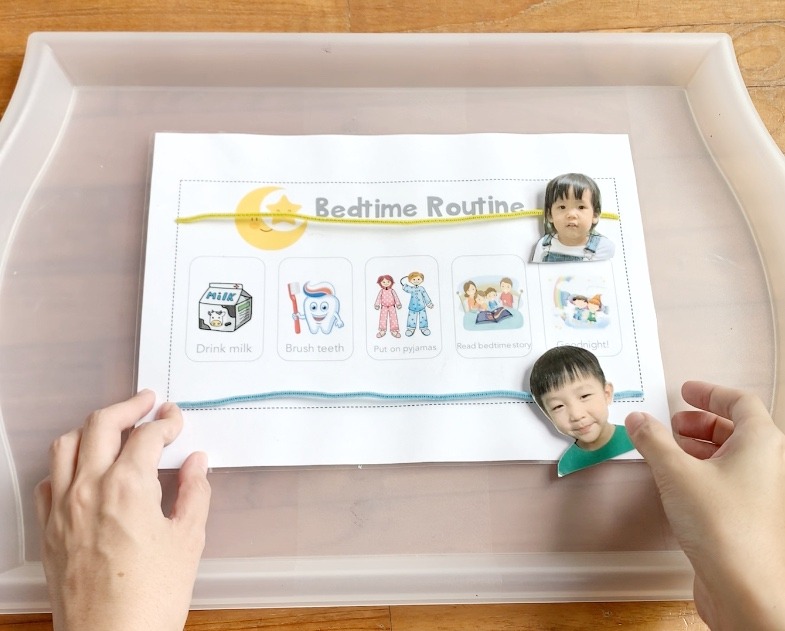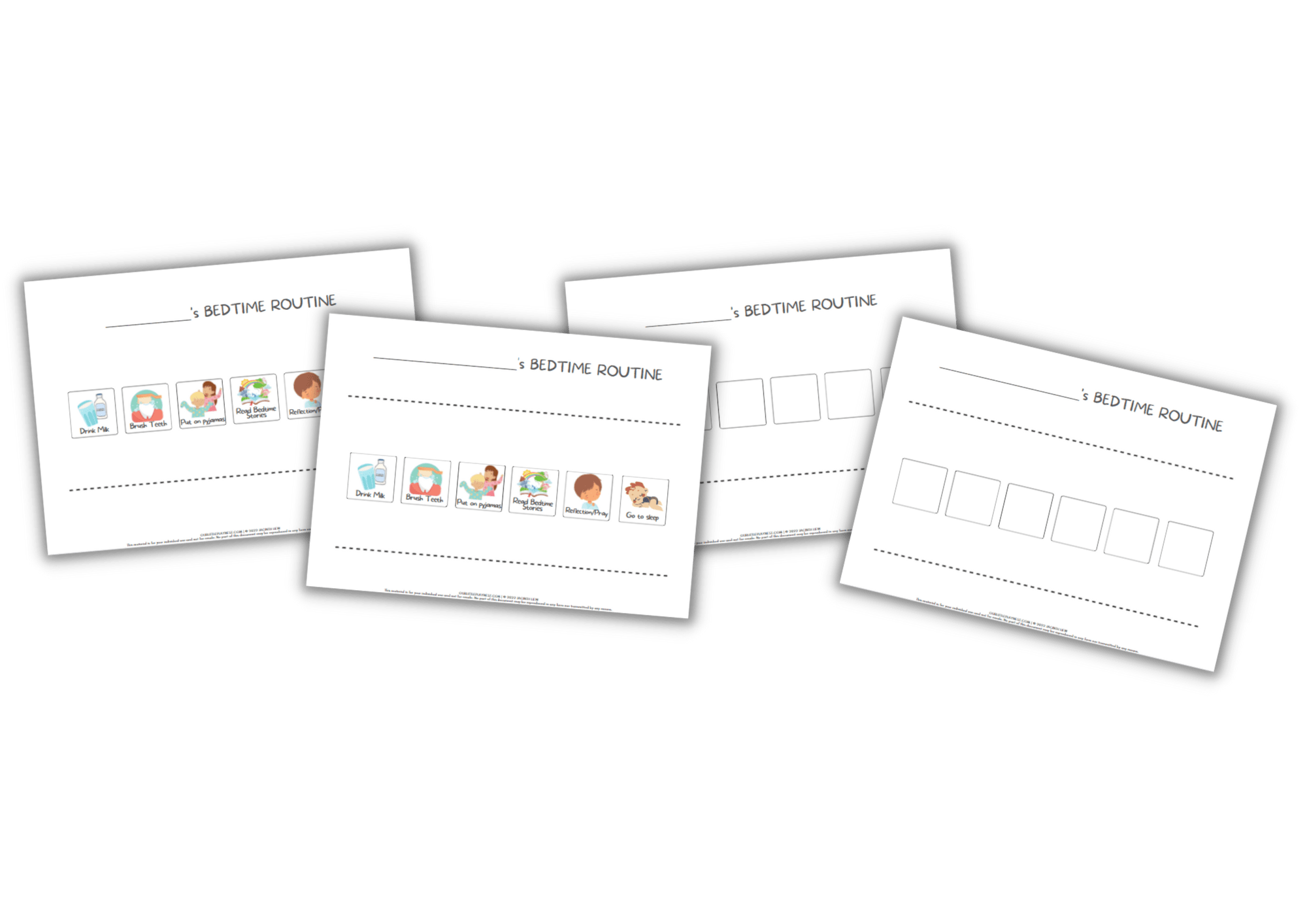Inside: What is a bedtime routine for children? How do I establish a bedtime routine for kids? How to manage children who refuse to sleep at night? How to use bedtime routines so children sleep better.
Free download: Bedtime routine slider template, includes a blank template that is customizable for your children of all ages!
What are routines?
Routines are a sequence of actions or habits performed on a regular basis.
For example, a morning routine could look like this: wash face, brush teeth, change clothes and eat breakfast, whereas a bedtime routine could look like this: shower, drink milk, brush teeth, read a book, sleep.
Why are routines important for children?
#1. They provide a sense of predictability and offer stability during times of stress and transition
Having routines provides a sense of predictability for children. As young children are not emotionally matured yet, changes in schedules can turn their lives upside down. This is especially true for children with a low adaptability temperament. With consistent routines, children learns to trust and starts to get a sense that the world is safe and reliable.
Children who have been experiencing unpredictability and constant changes daily may feel stressed when something new occurs. The fight-flight-freeze responses may become even more evident during bedtimes, mealtimes and other transitions.
#2 They reduce power struggles.
A simple bedtime routine opened the doors for choice-making which in turn fosters healthy self-esteem and increased independence. Children love to be in control, by letting them decide their routines (within boundaries of course), children feel a sense of ownership.
For example, you intended for your child to read his book AFTER putting on his pyjamas. But your child insists on doing it the other way around. Personally, I feel both ways work. When you let your child decide the sequence of events, he feels important and you stand a higher chance of gaining his cooperation at bedtime.
I involve my kids in deciding their bedtime routine with a bedtime routine chart. The only criteria I set was that they have to brush their teeth after milk, otherwise they can decide the sequence of events at bedtime. To spice things up, you can encourage your child to design their own bedtime charts. For me, I created a slider and it makes my kids very excited to complete their bedtime routine and get into bed.
No more power struggles at night!
Click here to watch how you can create this. Read on to grab your free download!
#3. They allow room for flexibility and change
Many times, parents have the misconception that routines and structure might cause a child to be rigid and inflexible in thought. They think that routines and structure are boundaries that restrict a child. This is actually far from the truth.
With routines set in place, it is actually easier for parents to introduce change in small steps. For example, when a child is already familiar with his or her bedtime routine, parents can then introduce small changes such as having another caregiver put them to bed instead of the usual one. The child won’t experience too many changes and uncertainty because he or she is already familiar with the events.
Some tips for success in order to help your children to be adaptable to changes:
- Where possible, pre-empt and communicate changes to your child in advance
- Talk about possible disruptions in advance, involve your child to problem solve and think of alternatives
- Celebrate when your child is adaptable
Incorporate visuals in your routines
This could be in the form of a chart, a picture book, poster, or any other format that your child can understand. For younger kids, definitely use pictures and refer to the images to help your children better understand the series of events at bedtime. For the older children, you can also involve them by coming up with the visuals together (e.g. searching for images on the internet, drawing them out).
Here’s your free Download:
It takes time, be patient!
Do not expect a routine to be established overnight. Consistency is key. Also, set it in stone but treat it like clay. If one step in the routine is not working out after several tries, feel free to incorporate a different step and see how well it works with your child.



